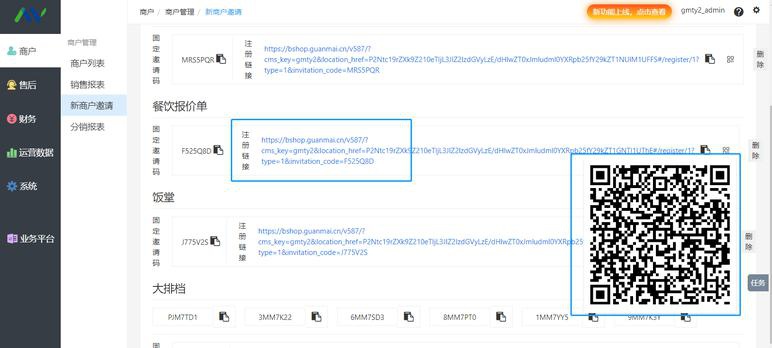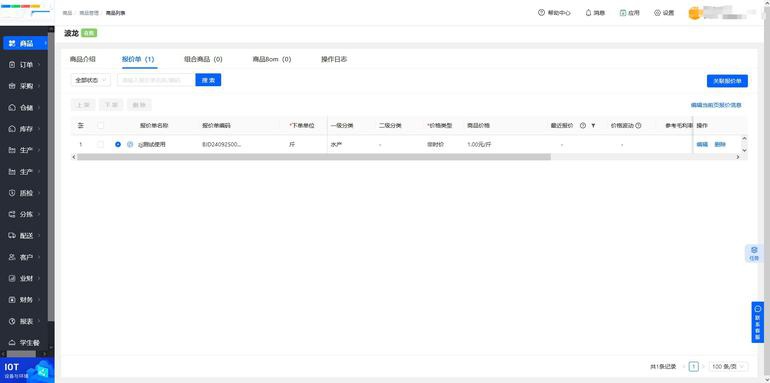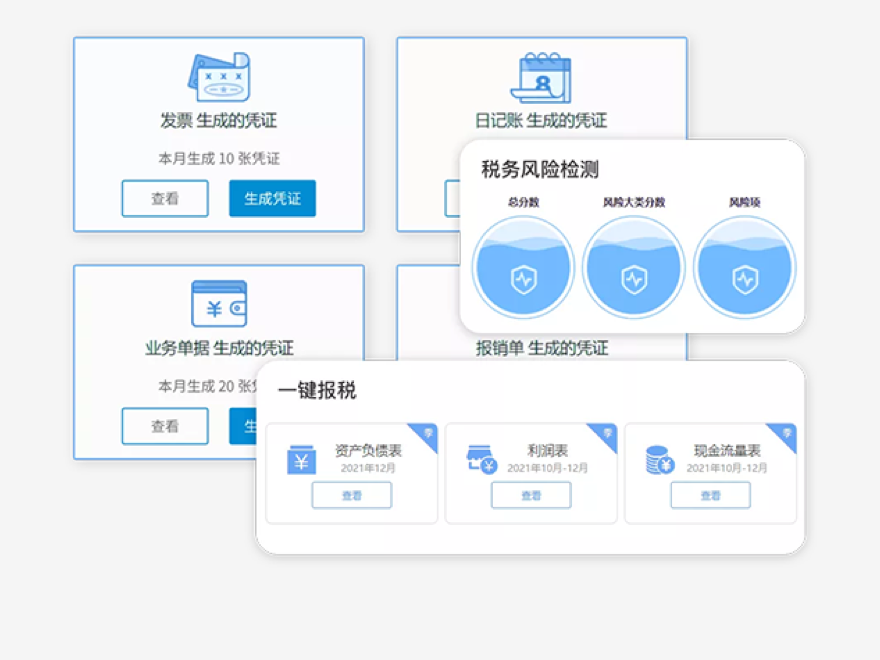彩票公式编程教程
 彩票公式编程教程
彩票公式编程教程
入门基础
彩票公式编程是将数学概率理论与计算机编程相结合的技术,旨在通过算法分析彩票规律。本教程将介绍基础概念和实现方法。
基本概念
1. 彩票类型:双色球、大乐透等不同彩票有不同的规则和算法
2. 概率计算:每种彩票都有特定的组合数和中奖概率
3. 历史数据分析:通过分析历史开奖数据寻找潜在规律
Python实现示例
“`python
import random
from itertools import combinations
双色球选号示例
def double_color_ball():
红球1-33选6个,蓝球1-16选1个
red_balls = random.sample(range(1, 34), 6)
blue_ball = random.randint(1, 16)
return sorted(red_balls), blue_ball
计算组合数
def calculate_combinations(total, select):
from math import comb
return comb(total, select)
双色球组合数计算
red_combinations = calculate_combinations(33, 6)
blue_combinations = 16
total_combinations = red_combinations blue_combinations
print(f”双色球总组合数: {total_combinations}”)
“`
数据分析技巧
1. 频率分析:统计各号码出现频率
“`python
def frequency_analysis(history_data):
freq = {}
for draw in history_data:
for num in draw:
freq[num] = freq.get(num, 0) + 1
return freq
“`
2. 冷热号分析:识别近期频繁出现或长期未出的号码
3. 奇偶比分析:统计奇偶号码的比例关系
进阶算法
1. 马尔可夫链预测:基于状态转移概率预测下一期号码
2. 神经网络模型:使用深度学习分析复杂模式
3. 遗传算法优化:模拟自然选择过程寻找最优号码组合
注意事项
1. 彩票本质是随机游戏,任何算法都无法保证中奖
2. 编程分析应保持理性,避免沉迷
3. 遵守当地法律法规,合理购彩
完整示例:简单的彩票分析系统
“`python
import numpy as np
import pandas as pd
from collections import Counter
class LotteryAnalyzer:
def __init__(self, history_data):
self.data = history_data
def hot_numbers(self, n=5):
all_numbers = [num for draw in self.data for num in draw]
return Counter(all_numbers).most_common(n)
def cold_numbers(self, n=5):
all_numbers = [num for draw in self.data for num in draw]
counts = Counter(all_numbers)
return sorted(counts.items(), key=lambda x: x[1])[:n]
def generate_suggestion(self):
hot = [num for num, cnt in self.hot_numbers(3)]
cold = [num for num, cnt in self.cold_numbers(2)]
suggestion = hot + cold
return sorted(suggestion)
示例使用
history_data = [[1,5,9,15,20,33], [2,8,12,16,25,30], …] 填充真实历史数据
analyzer = LotteryAnalyzer(history_data)
print(“热门号码:”, analyzer.hot_numbers())
print(“冷门号码:”, analyzer.cold_numbers())
print(“推荐号码:”, analyzer.generate_suggestion())
“`
记住,彩票编程分析更多是数学和编程的练习,而非致富捷径。理性对待,享受编程和数学的乐趣。
点击右侧按钮,了解更多行业解决方案。
相关推荐
彩票公式编程教程双色球
彩票公式编程教程双色球

彩票公式编程教程:双色球分析
双色球基础介绍
双色球是中国最受欢迎的彩票游戏之一,每周二、四、日晚开奖。玩法是从1-33个红球中选6个,从1-16个蓝球中选1个。中奖需要匹配开奖号码中的红球和蓝球数量。
编程分析双色球的基本思路
通过编程分析双色球历史数据,可以寻找一些统计规律,但需注意彩票本质上是随机游戏,任何分析方法都不能保证中奖。以下是几种常见的分析角度:
1. 频率分析:统计各号码出现的历史频率
2. 冷热号分析:近期出现频繁的"热号"和长期未出的"冷号"
3. 奇偶比、大小比分析
4. 和值分析:6个红球数字之和
5. 连号分析:连续数字出现的概率
Python实现示例
以下是一个简单的Python代码示例,用于分析双色球历史数据:
```python
import pandas as pd
from collections import Counter
假设已有历史数据CSV文件,包含期号和各号码列
data = pd.read_csv('ssq_history.csv')
统计红球出现频率
red_balls = data[['红1','红2','红3','红4','红5','红6']].values.flatten()
red_counter = Counter(red_balls)
统计蓝球出现频率
blue_counter = Counter(data['蓝球'])
打印出现频率最高的10个红球和5个蓝球
print("热门红球:", red_counter.most_common(10))
print("热门蓝球:", blue_counter.most_common(5))
计算奇偶比
def odd_even_ratio(row):
odd = sum(1 for n in row[:6] if n%2 == 1)
return f"{odd}:{6-odd}"
data['奇偶比'] = data.apply(odd_even_ratio, axis=1)
print("n奇偶比统计:")
print(data['奇偶比'].value_counts())
```
进阶分析方法
1. 马尔可夫链预测:基于号码之间的转移概率
2. 神经网络模型:使用LSTM等模型学习号码序列
3. 蒙特卡洛模拟:模拟大量随机组合,寻找统计特性
```python
简单的蒙特卡洛模拟示例
import numpy as np
def generate_random_combination():
reds = np.random.choice(range(1,34), 6, replace=False)
blue = np.random.choice(range(1,17), 1)
return np.sort(reds), blue
生成10万组随机号码并分析特性
random_combinations = [generate_random_combination() for _ in range(100000)]
```
注意事项
1. 彩票是概率游戏,编程分析只能提高娱乐性,不能保证中奖
2. 不要过度投入金钱和时间
3. 所有分析方法都有其局限性
4. 理性购彩,量力而行
结论
通过编程分析双色球可以增加对游戏的理解和娱乐性,但应保持理性态度。建议将此类编程项目作为学习数据分析的工具,而非赚钱手段。记住,彩票中大奖的概率极低,最健康的购彩方式是小额随机投注。
点击右侧按钮,了解更多行业解决方案。
彩票公式编程教程福彩3d和值
彩票公式编程教程福彩3d和值

福彩3D和值计算公式编程教程
一、福彩3D和值基础概念
福彩3D的和值是指三个开奖号码相加的总和,范围在0-27之间。例如开奖号码为1、2、3,则和值为6。和值是3D彩票分析中的重要指标,通过编程计算和值可以帮助彩民进行数据分析。
二、基础计算公式编程实现
1. 单个号码和值计算
```python
def calculate_sum(a, b, c):
"""
计算3个数字的和值
:param a: 第一位数字(0-9)
:param b: 第二位数字(0-9)
:param c: 第三位数字(0-9)
:return: 和值(0-27)
"""
return a + b + c
示例
print(calculate_sum(1, 2, 3)) 输出6
```
2. 批量计算历史数据和值
```python
def batch_calculate_sums(history_data):
"""
批量计算历史开奖数据的和值
:param history_data: 历史数据列表,格式如[[1,2,3], [4,5,6], ...]
:return: 和值列表
"""
return [sum(item) for item in history_data]
示例
history = [[1,2,3], [4,5,6], [7,8,9]]
print(batch_calculate_sums(history)) 输出[6, 15, 24]
```
三、和值统计分析编程
1. 和值频率统计
```python
from collections import defaultdict
def sum_frequency_analysis(history_data):
"""
和值出现频率统计
:param history_data: 历史数据
:return: 字典{和值: 出现次数}
"""
sums = batch_calculate_sums(history_data)
frequency = defaultdict(int)
for s in sums:
frequency[s] += 1
return dict(frequency)
示例
history = [[1,2,3], [4,5,6], [1,2,3], [0,0,0]]
print(sum_frequency_analysis(history))
输出{6: 2, 15: 1, 0: 1}
```
2. 和值遗漏值计算
```python
def sum_missing_calculate(current_sum, history_sums):
"""
计算指定和值的当前遗漏期数
:param current_sum: 要查询的和值
:param history_sums: 历史数据和值列表
:return: 遗漏期数
"""
missing = 0
for s in reversed(history_sums):
if s == current_sum:
return missing
missing += 1
return missing
示例
history_sums = [6, 15, 6, 0, 10, 12]
print(sum_missing_calculate(6, history_sums)) 输出3
```
四、和值预测模型编程
1. 简单移动平均预测
```python
def moving_average_prediction(history_sums, window_size=5):
"""
使用移动平均法和值预测
:param history_sums: 历史和值数据
:param window_size: 移动窗口大小
:return: 预测的下期和值
"""
if len(history_sums) < window_size: return None return round(sum(history_sums[-window_size:]) / window_size) 示例 history_sums = [10, 12, 14, 11, 13, 15, 12] print(moving_average_prediction(history_sums)) 输出13 ``` 2. 和值区间概率分析 ```python def sum_range_probability(history_data): """ 计算各和值区间出现的概率 :param history_data: 历史数据 :return: 区间概率字典 """ sums = batch_calculate_sums(history_data) total = len(sums) ranges = { "0-5": 0, "6-10": 0, "11-15": 0, "16-27": 0 } for s in sums: if s <= 5: ranges["0-5"] += 1 elif 6 <= s <= 10: ranges["6-10"] += 1 elif 11 <= s <= 15: ranges["11-15"] += 1 else: ranges["16-27"] += 1 return {k: v/total for k, v in ranges.items()} 示例 history = [[1,2,3], [4,5,6], [7,8,9], [0,0,0], [9,9,9]] print(sum_range_probability(history)) 输出{'0-5': 0.4, '6-10': 0.2, '11-15': 0.2, '16-27': 0.2} ``` 五、完整应用示例 ```python 完整的3D和值分析程序 class SumAnalyzer: def __init__(self, history_data): self.history = history_data self.sums = batch_calculate_sums(history_data) def get_sum_frequency(self): return sum_frequency_analysis(self.history) def get_current_missing(self, target_sum): return sum_missing_calculate(target_sum, self.sums) def predict_next_sum(self, method='average', window=5): if method == 'average': return moving_average_prediction(self.sums, window) 可扩展其他预测方法 return None def get_sum_ranges(self): return sum_range_probability(self.history) 使用示例 if __name__ == "__main__": 模拟历史数据 test_data = [[1,2,3], [4,5,6], [1,2,3], [0,0,0], [9,9,9], [1,1,1]] analyzer = SumAnalyzer(test_data) print("和值频率:", analyzer.get_sum_frequency()) print("和值6的当前遗漏:", analyzer.get_current_missing(6)) print("下期和值预测:", analyzer.predict_next_sum()) print("和值区间概率:", analyzer.get_sum_ranges()) ``` 通过以上编程方法,彩民可以系统地分析福彩3D的和值数据,为选号提供数据支持。需要注意的是,彩票本质是随机游戏,任何分析方法都不能保证中奖,这些工具仅作为辅助参考。
点击右侧按钮,了解更多行业解决方案。
彩票公式编程教程22选五绝密公式
彩票公式编程教程22选五绝密公式

22选5彩票选号策略与编程实现
22选5彩票基础
22选5是一种从22个号码中选择5个号码的彩票玩法,中奖概率相对较高。虽然彩票本质上是随机游戏,但一些数学方法和统计策略可以帮助玩家更有条理地选择号码。
常用选号策略
1. 热号与冷号分析
通过统计历史开奖数据,计算每个号码出现的频率:
- 热号:近期出现频率较高的号码
- 冷号:长期未出现的号码
```python
Python示例:统计号码频率
import pandas as pd
假设history_data是历史开奖数据DataFrame
def analyze_frequency(history_data):
frequency = {}
for num in range(1, 23):
count = history_data.apply(lambda x: num in x.values).sum()
frequency[num] = count
return sorted(frequency.items(), key=lambda x: x[1], reverse=True)
```
2. 奇偶平衡策略
理想的号码组合通常包含2-3个奇数和2-3个偶数:
- 全奇或全偶组合出现概率较低
- 3奇2偶或2奇3偶组合较为常见
3. 区间分布法
将22个号码分为几个区间(如4个区间,每个区间5-6个号码),选择号码时尽量覆盖多个区间。
编程实现选号算法
1. 基础随机选号
```python
import random
def random_select():
numbers = list(range(1, 23))
return sorted(random.sample(numbers, 5))
```
2. 基于统计的智能选号
```python
def smart_select(history_data, hot_num=3):
获取热号
frequency = analyze_frequency(history_data)
hot_numbers = [num for num, cnt in frequency[:hot_num]]
确保奇偶平衡
selected = []
while len(selected) < 5: pool = list(range(1, 23)) 优先从热号中选择 if random.random() > 0.7 and hot_numbers:
num = random.choice(hot_numbers)
else:
num = random.choice(pool)
检查奇偶平衡
odd_count = sum(1 for n in selected if n % 2 == 1)
if num % 2 == 1 and odd_count >= 3:
continue
if num % 2 == 0 and (len(selected) - odd_count) >= 3:
continue
if num not in selected:
selected.append(num)
return sorted(selected)
```
3. 号码组合优化
```python
def optimized_combination(history_data, num_combinations=5):
combinations = []
for _ in range(num_combinations):
使用不同策略生成组合
if random.random() > 0.5:
comb = smart_select(history_data, hot_num=4)
else:
comb = random_select()
确保组合多样性
if not any(set(comb) == set(c) for c in combinations):
combinations.append(comb)
return combinations
```
注意事项
1. 彩票本质是随机游戏,任何策略都不能保证中奖
2. 合理控制投入金额,量力而行
3. 这些方法旨在提高选号的系统性,而非"预测"开奖结果
4. 建议结合多种策略使用,避免单一模式
进阶思路
1. 连号分析:22选5中连号出现概率较高,可适当考虑
2. 和值范围:历史开奖号码总和多在特定区间波动
3. AC值分析:计算号码的复杂度指标
4. 遗漏值分析:跟踪号码未出现的期数
记住,彩票应视为娱乐方式,而非投资手段。理性购彩,享受过程更为重要。
点击右侧按钮,了解更多行业解决方案。
免责声明
本文内容通过AI工具智能整合而成,仅供参考,e路人不对内容的真实、准确或完整作任何形式的承诺。如有任何问题或意见,您可以通过联系1224598712@qq.com进行反馈,e路人收到您的反馈后将及时答复和处理。






















